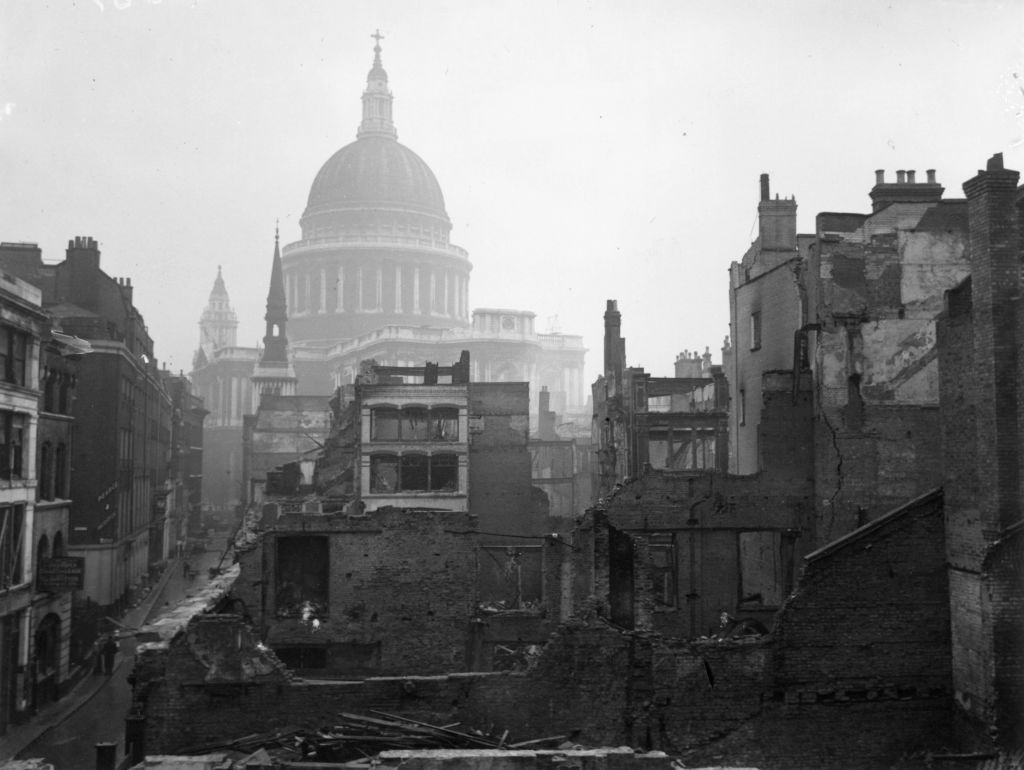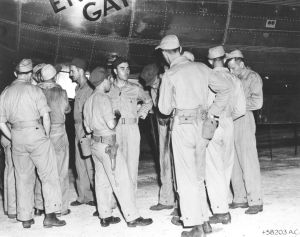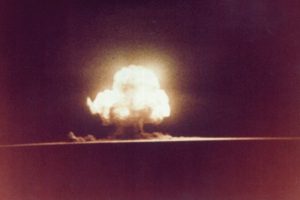The clipped voice on the old television newsreel tells us that November 27, 1958 was a gray old London day. The Queen, accompanied by Vice President Richard Nixon, was dedicating and opening the American Memorial Chapel at the far east end of the City of London’s great cathedral. Ordinary men and women from all over Britain paid for the chapel by public subscription. It was the least we could do.
It was a miracle that the cathedral had survived the Nazi Blitz almost intact. One part of the cathedral was hit by a bomb in October 1940, and it was on that site that eighteen years later the Memorial Chapel was built.
The Chapel is dedicated to the 28,000 American people who were stationed on British soil and died in World War Two, many of them on D-Day. Its centerpiece is a large, red, leatherbound illuminated book, listing every single name in that grim tally of sacrifice alphabetically, from Aaberg to Zingale.
As President Eisenhower put it when he visited in 1959, “The Americans, whose names here appear, were part of the price that free men have been forced a second time to pay in this century to defend human liberty and rights.” Every day, a page is turned in that precious book. We Londoners won’t let the memory of those who gave so much be trapped in closed pages.
The chapel has three stained-glass windows bearing the emblems of each of America’s forty-eight states and four dependencies in existence in 1958. Its wood carvings including one of a rocket and the stars — a nod to the emerging space program. There are intricate carvings of North American flora and fauna.
Every November, Americans are welcomed to a thanksgiving service at the Chapel with comrades, children and grandchildren paying their respects. “I found the Thanksgiving service very moving’, my old friend Bishop Michael Colclough, who was a senior cleric at St Paul’s,” tells me. “Lots of Americans have an affection for London and St Paul’s, and for many of them it centers on that small chapel with its memories and family pride.”
St Paul’s Cathedral is a very special place to me too. I was ordained there: a working-class Londoner whose grandfather was killed on the very last day of the war. We all grew up with stories of how the fire marshals had saved the cathedral from destruction by throwing German incendiary bombs off the roof. Its miraculous survival spoke to Londoners of hope.
I watch the newsreel again. The narrator tells us that the Queen met the next of kin of twelve of the American troops who are commemorated on the roll of honor. As the service begins, three American servicemen process up and hand over the American flag “for safekeeping” to the Dean of the cathedral. The newsreader tells us that the chapel is “a British tribute” to the Americans. We remember that, and who our true friends still are.
This article was originally published in The Spectator’s December 2021 World edition.

























